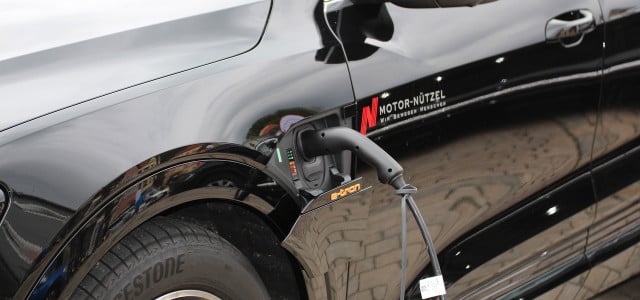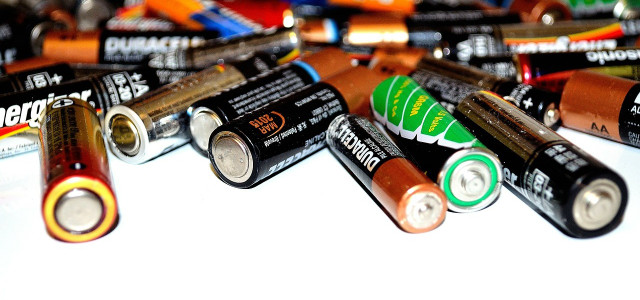The transport sector is the leading cause of the greenhouse and noxious gases that are driving planetary and human ill-health. Is e-mobility the solution? Find out here.
E-mobility — or electro-mobility — involves the use of electric propulsion instead of internal combustion engines for a wide range of transportation types — such as e-bikes, e-scooters, e-cars, and public transport. The sector is also aiming to develop heavy trucks, aircraft and ships that are propelled without fossil fuels in the near future. The technology involved is constantly evolving.
What exactly is e-mobility? E-mobility is formally defined by the European Commission as “clean and efficient transport, using electric vehicles, powered either by batteries or by hydrogen fuel cells”.
Interest in e-mobility continues to rise as the world battles to reduce emissions. The transportation sector — from cars to buses, ships and aircraft — accounts for the largest portion of total American greenhouse gas (GHG) emissions and remains a leading driver of the climate crisis globally. According to the International Council on Clean Transportation Europe, emissions from the combustion and production of fuels and electricity for transport must be reduced by at least 80 percent from today’s levels if our climate goals are to be achieved. It has also outlined a number of combustion engine car phase-out announcements across Europe.
Learn more: Everything You Need to Know About Fossil Fuels
However, reducing emissions from transportation has been challenging because of the importance that people place on travel, the dominance of petroleum as a primary fuel source, and the lack of cost-effective alternatives. Authorities and campaigners all over the globe are searching for ways to overcome these challenges.
‘Clean and efficient transport‘ is undoubtedly a vital part of achieving the net zero goals of the Safeguard Mechanism, COP-27 and the Paris Agreement. 13 countries and 31 cities in the world are joining the ban on diesel and gasoline cars. Is e-mobility the answer? Let’s take a look at the documented benefits so far, and examine some of the challenges that are casting doubt upon the overall success these vehicles will have in achieving a cleaner, healthier planet.
Types of E-Mobility Vehicles
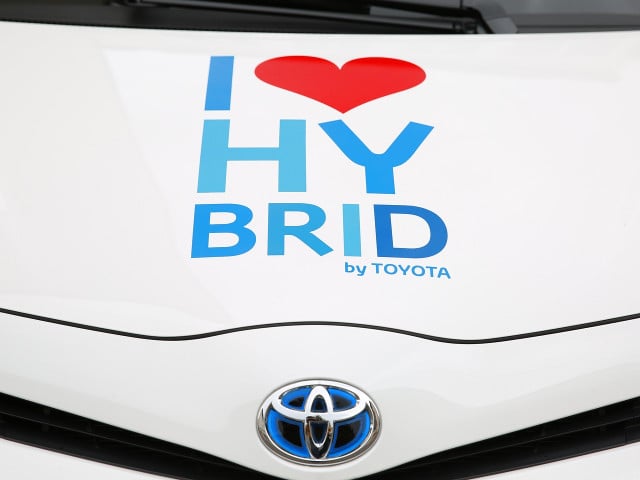
The e-mobility sector is expanding quickly — with new models and varieties emerging often. According to the U.S. Department of Transportation, there are three types of electric vehicles (EV) currently available on the American market:
- Battery electric vehicles (BEVs) — are propelled by at least one electric motor that is powered by rechargeable battery packs. BEVs run solely on electricity only and can only be charged via an external power source. They can generally travel at least 100 miles on a full charge — with newer models offering in excess of 200–300 miles. BEVs are also known as All-Electric Vehicles (AEVs) and operate with zero tailpipe emissions.
- Plug-In Hybrid Electric Vehicles (PHEVs) — also use rechargeable (from an external power source) batteries to power an electric motor, but also contain a smaller internal combustion engine that can recharge the battery (or in some models, directly power the wheels) to extend driving range. These vehicles can also run on gasoline, but reportedly use 14–47 percent less fuel than conventional vehicles if their batteries are fully charged.
- Fuel cell electric vehicles (FCEVs) — convert hydrogen into electricity through an electrochemical process to power the motor. FCEVs are fueled with compressed hydrogen gas that is stored in a tank on the vehicle and do not need to be plugged in.
It’s important to note that while hybrid vehicles are considered electric, only BEVs and hydrogen FCEVs have the potential to achieve the Paris Agreement goals. Electric cars are the most commonly purchased type of EV in the US and globally. For more information on how these vehicles work mechanistically, check out our article explaining the inner workings of electric cars when you finish reading.
Benefits of E-Mobility: Planetary and Human Health
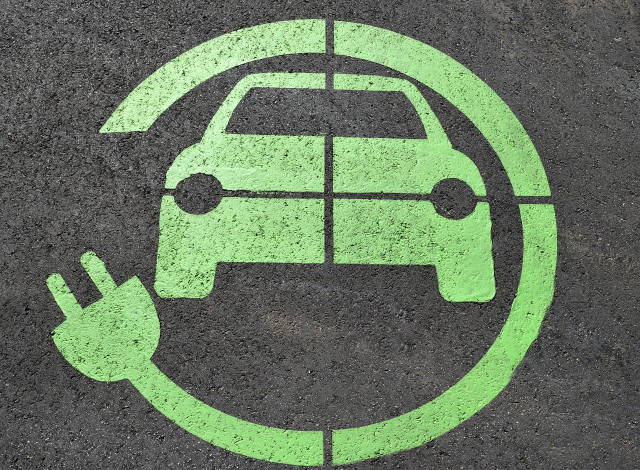


When it comes to the petroleum engine, there are many reasons not to own a car. Emissions are at the top of the list. Perhaps the most significant advantage e-mobility offers is the total lack of tailpipe emissions. The absence of a combustion engine (and subsequent emissions) eliminates a range of harmful, toxic and hugely problematic issues. These issues are of particular concern in built-up urban areas.
Recommended read: Clearing the Air: 11 Simple Solutions to Air Pollution in Cities
Traditional combustion engines generate noxious particulate matter and a range of byproducts — including nitrogen dioxide, carbon monoxide, hydrocarbons, benzene, and formaldehyde — that are harmful to humans, ecosystems and the planet as a whole. Engine noise and fuel leaks also contribute to pollution and global decay. E-mobility is designed to eliminate many of the issues associated with traditional transport — that include:
- Nitrous oxide depletes the ozone layer
- Sulfur dioxide and nitrogen dioxide mix with rainwater, which is the cause of acid rain
- Oil and fuel spills from cars and trucks seep into the soil near highways
- Discarded fuel and particulates from vehicle emissions contaminate lakes, rivers and wetlands
- High levels of particulate matter causes skin and eye irritation and allergies
- Fine particles lodge deep in lungs and cause breathing problems
- Hydrocarbons react with nitrogen dioxide and sunlight and form ozone, which is beneficial in the upper atmosphere but harmful at ground level — causing chest pains, breathing difficulties and coughing
- Carbon monoxide is toxic and particularly dangerous to infants and people suffering from heart disease
- Noise from cars can damage hearing and lead to psychological ill-health. E-mobility is a quieter way to travel and these vehicles significantly reduce levels of noise pollution with their subtle hum.
Benefits of E-Mobility: Socioeconomic Health



Another major benefit of e-mobility is fuel savings — as electricity is more energy efficient than fossil fuels. Savings are estimated to be as much as 14,500 dollars over 15 years for EV owners. Maintenance costs are substantially lower, too — as much as 3,000 dollars over a five-year ownership period, according to Forbes. The global e-mobility market itself is fast-growing and predicted to reach 325 billion dollars by 2030 — generating jobs and incomes all over the world.
The benefits associated with e-mobility are considered particularly important from an environmental justice perspective. Many communities that are overburdened by pollution, poverty and their associated effects are predominantly areas of low income and communities of color — and e-mobility’s benefits are linked to far-reaching effects. According to the Department of Transportation, e-mobility offers equal-opportunity economic benefits across urban and rural populations, as well as among communities of color, Tribal communities, and disadvantaged and underserved communities.
A widespread adoption of EVs will require an extensive network of charging stations. Researchers are examining opportunities and impacts associated with a full range of charging technologies. The US plans to develop charging networks across many rural areas — anticipating a subsequent range of social and economic benefits for these smaller communities. For example, due to the time necessary to charge, stops at charging stations are often combined with other activities that encourage social interaction and bring in revenue for local businesses.
Many grants, loans, and financial incentives — such as those outlined in the Inflation Reduction Act — are available to help people, businesses, and communities purchase both EVs and chargers in view of the multiple benefits associated with e-mobility. A healthier planet with healthier inhabitants seems possible, but unfortunately, it’s not all that straight-forward. E-mobility undoubtedly offers pros — but let’s look at the cons before we look forward to a brighter future.
Challenges Facing E-mobility: Energy
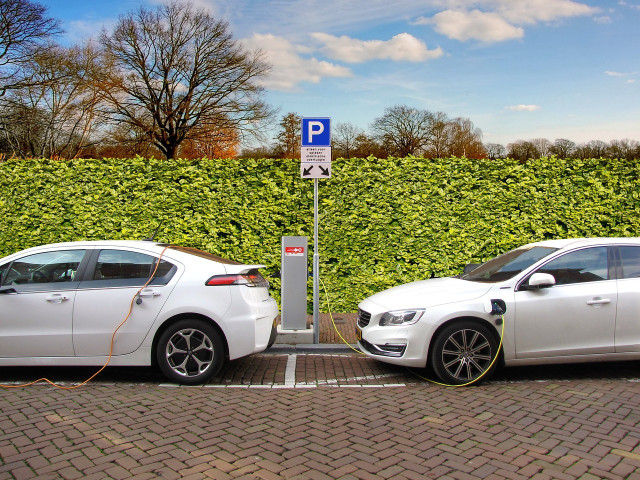


Batteries
While e-mobility does not boast tailpipe emissions — emissions do come from the electricity used in battery manufacture and in battery assembly. A major challenge for e-mobility lies with the lithium-ion batteries and fuel cells currently installed in nearly all EVs.
E-mobility batteries cannot be recycled, are difficult to dispose of, and can leak hazardous waste and heavy metals into the environment. FCEVs fueled by hydrogen also remain majorly problematic because the primary source of hydrogen is through reforming methane from natural gas.
EV batteries require the extraction of natural resources — including lithium, cobalt, nickel, and manganese. These rare minerals are heavy and extraction practices are considered socially and environmentally harmful by most experts and researchers. They also say that:
- an ongoing reliance on these batteries will lead to resource shortages and elevated battery pack prices
- large amounts of GHG emissions are generated during the extraction and refinement of these heavy minerals
- the environmental and social costs of urban e-mobility will fall on communities and ecosystems around metal mines and manufacturing plants
- These EVs must travel over 21,725 kilometers and be charged with emission-free energy to achieve significant reductions in GHG emissions
Electricity
Generating the electricity to charge e-mobility vehicles is also a problematic issue in many regions. Charging may also significantly contribute to carbon pollution and environmental hazards — particularly if the electricity is generated from fossil fuels. This is not a major issue for some countries — like Norway or France — where the vast majority of electricity is near carbon-neutral from sources like hydroelectric power.
Learn more: Pros and Cons of Hydroelectric Energy & What They Mean
In 2020, renewable energy sources — including wind, hydroelectric, solar panels, biomass, and geothermal energy —became the second most prevalent energy source in the US. Unfortunately, natural gas produced twice as much and remains a clear leader. According to a recent report, the US electrical grid is not well prepared to take on the additional electric load large-scale e-mobility will bring — particularly in states that transitioned rapidly to renewable energy and are unprepared.
Researchers claim that if every car in California were electric today, electricity consumption would likely increase by a massive 47 percent. Because renewable sources of electricity are dependent on weather conditions, a variety of challenges must be overcome to safely and reliably connect them to the grid. A healthy relationship between e-mobility and the grid will also heavily depend on when drivers charge their cars to prevent overload.
Find out how energy is generated in your area by putting your zip code into EPA’s Power Profiler interactive web page.
Challenges Facing E-mobility: Socioeconomic and Safety



Cost
The complicated battery manufacturing process — as well as the intricate workings of e-mobility vehicles — make them expensive to buy. As of early summer 2023, e-mobility vehicles prices are near record highs — although more affordable models are expected soon. According to Business Insider:
- New EVs sold for an average of 65,041 dollars in November 2023.
- More than half of American consumers say that price-tags are preventing their e-mobility purchases.
- More than half of American consumers say that EVs cost too much.
Safety
Many fake reports of EVs spontaneously combusting into flames have circulated social media — causing high levels of unnecessary anxiety about e-mobility and fire safety. Safety is, however, a real concern if EVs do malfunction. Although much more rare than much of the public might believe, electrical hazards in EVs can result in fire, electric shock or explosion, according to UL Research Institute — who publish safety standards for e-mobility devices to help minimize these hazards and risks.
Additionally, the consequences of a fire can be extensive, as a lithium battery is difficult to extinguish. It can also reignite long after it has been extinguished. The chances of this happening are extremely low, however. Research has found there is a 0.0012 percent likelihood of EV battery fire — compared to a 0.1 percent chance of your petrol or diesel car igniting.
Range anxiety and limited selection
The traditional transport sector offers a wide range of makes, models and types of vehicles compared to the e-mobility sector. Mechanics, garages and repairs for traditional vehicles are also much more readily available as the e-mobility sector remains in its infancy by comparison. This is one of the cons, however, newer models are emerging all the time and EV popularity is growing.
Many Americans also worry about range. Nobody wants their chosen mode of transport to die out mid-journey. Although most EVs have a range between 100 and 300 miles — charging can be time-consuming if fast-charging stations are not available and planned journeys are long. A scarcity of charging stations and charger incompatibility in many areas of the country is contributing to e-mobility range anxiety.
Supply and demand
The limited supply of EVs may struggle to meet predicted demand. EV sales went from 4.3 percent January 2022 to over 7 percent January 2023. A recent survey suggests that around eight in ten children said that they intend to drive an electric or hybrid vehicle — with four in five saying they could already influence their parents’ buying towards e-mobility. E- mobility specialist Richard Randoll forecasts that by 2030, at least one out of every ten new cars sold globally will be electric.
Commenting on the 2023 Moving World Report by the investment firm UP.Partners, Reuters say that manufacturers may not be able to build as many EVs as quickly as anticipated if government and industry do not combat challenges. According to the report, shortages of battery raw materials are among the issues that will impinge on the industry’s capability to meet e-mobility targets, demands and mandates. The cost of raw materials is also affecting the supply chain. The lithium price index went up almost eightfold from 2020 to 2022 — and battery demand is predicted to soar to 900 percent by 2030.
E-mobility: The Debate



While E-mobility may be the only chance we have of achieving sustainable human transport before it’s too late — it’s not without challenges and criticism.
The Guardian recently published an article by popular British actor Rowan Atkinson (aka Mr Bean), who was an early and eager supporter of e-mobility. In the article, EVs received a scathing attack. Atkinson described EV batteries as “a perverse choice of hardware with which to lead the automobile’s fight against the climate crisis.” He also commented that they are absurdly heavy, huge amounts of energy are required to make them, and they are estimated to last only upwards of 10 years.” He goes on to note that we are slow to develop “green” ways of producing solutions — like the lighter ‘solid battery‘ (that is much more energy efficient and quicker to charge) or alternative fuel like hydrogen. Atkinson is not alone in his new views, but is he right? Is our “honeymoon with electric cars is coming to an end?”
Manufacturing batteries and generating the electricity used to charge EVs may create carbon pollution and other challenges — but e-mobility still appears to have a clear advantage over conventional vehicles when it comes to the environment.
Research finds that even factoring in indirect emissions from manufacture of the car and fuels used to power electricity, e-mobility does not equate to the much more noxious fossil fuelled emissions from combustible engines. However, in countries with coal-intensive electricity generation, the benefits of EVs are smaller or similar to traditional gasoline-based travel.
A global comparison of the life-cycle GHG emissions of combustion engine and electric passenger cars in 2021 found:
- Only battery electric and hydrogen fuel cell electric vehicles have the potential to achieve the Paris Agreement goals.
- FCEVs fueled by hydrogen remain majorly problematic because the primary source of hydrogen is through reforming methane from natural gas.
- There is no realistic pathway for deep decarbonization of combustion engine vehicles.
- To align with Paris Agreement targets, the registration of new combustion engine vehicles should be phased out in the 2030–2035 time frame.
- Life-cycle emissions over the lifetime of BEVs are already lower than a comparable gasoline car by 66–69 percent in Europe, 60–68 percent in the United States, 37–45 percent in China, and 19–34 percent in India.
Research from the Netherlands — world leaders in the chase for net zero — makes the following recommendations for the future development of the e-mobility sector:
- To promote competitive pricing of EVs: Cut fossil fuel subsidies and provide financial incentives for producers, vendors, and end-users of cobalt-free EV batteries.
- To encourage the adoption of light and short-range EVs: through financial incentives and by improving road safety.
- To address range anxiety and shorten charging time: Expand rapid-charging and battery-swap infrastructure for EVs in cities — and in ways that mimic the experience of filling up at a gas station.
- Fund investments for the improvement of energy performance and organic batteries.
- Ensure ethical and sustainable sourcing of raw materials: Assist EV businesses in adhering to supply chain laws.
- Call upon governments to require publicly available and independently verified Environmental Impact Assessments from the battery production industry.
E-mobility: Conclusions
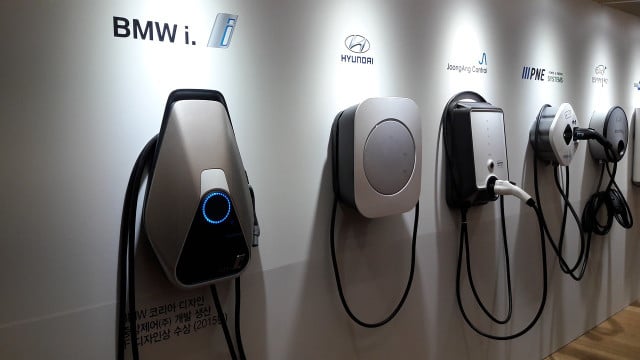


E-mobility is complicated and evolving every day. It has big growth potential — but this potential is reliant on investments in better batteries, charging systems, and the development of smart/intelligent energy distribution systems.
This might, in fact, be one of the biggest pros of e-mobility globally — because it demands sustainable and clean energy systems to achieve its purpose. Therefore, Governments all over the world are now investing heavily in finding renewable, sustainable, intelligent energy resources to power e-mobility as the net-zero deadlines rapidly approach.
The EU Science Hub recognizes that the success of e-mobility is intrinsically linked to smart grid development — one that “can predict and respond to usage, deliver reliable, economic and sustainable electricity, and compensate for intermittent electricity generation from renewable, weather-dependent sources.”
According to a publication in Nature, results show that a large–scale adoption of EVs is able to reduce CO2 emissions through more channels than previously expected due to this continued decarbonization of the electricity supply. If we can overcome the challenges e-mobility faces on time, the future may look a little brighter — but only if they are powered sustainably.
A nationwide transition to electric vehicles powered by renewable energy has the potential to save thousands of American lives and trillions of dollars in public health costs over the next three decades, according to research and many reports.
A lot of work still needs to be done. But so far, switching to e-mobility does appear to have the potential to save money on gas and do something for the environment — and save energy as we race to save our beautiful planet.
Read more:
- LA Public Transportation: How to Use It & 6 Cool Places to Go
- How to Stop Car Sickness in 5 Steps
- 8 DIY Car Air Fresheners (Natural & Low Waste)
- 10 Mistakes That Keep Everyone From Saving Water
- Environmental Activism: How to Get Involved in 2023
Do you like this post?






